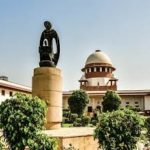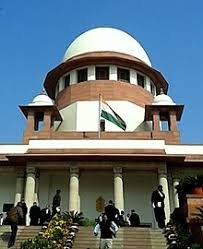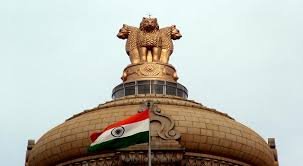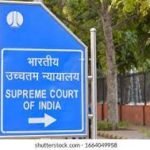The appeals challenged two orders from the High Court of Judicature at Allahabad, both dismissing the appellant’s applications filed under Section 482 of the Code of Criminal Procedure, 1973 (CrPC), which sought to quash proceedings initiated against him.
The core of the dispute involves proceedings lodged against the appellant under the Uttar Pradesh Gangsters & Anti-Social Activities (Prevention) Act, 1986 (“the Act of 1986”). The proceedings arose from a First Information Report (FIR No. 850 of 2018). The appellant was accused of being an “organized gang” leader with David Dutta, engaging in economic offences involving fraud and cheating, and other IPC offences. The gang-chart was purportedly approved by the District Magistrate, Allahabad on 28.07.2018, with signatures of police officials. The appellant had multiple FIRs registered against him, including allegations of:
- Forging documents and siphoning off Rs. 13 crores from students (FIR No. 476/2017).
- Running a school without recognition, constructing without permission, and misappropriating Rs. 6 crores of student fees (FIR No. 170/2017).
- Exhorting assaults and firing a gunshot (FIR No. 726/2017).
- Collusion and forging documents to appoint office bearers, and embezzling crores of rupees from a board (FIR No. 761/2017).
- Being a member of an organised gang, forging documents, and encroaching on land (FIR No. 244/2017). Non-bailable warrants were issued against the appellant on 28.02.2023 and 14.03.2023 by the Special Judge (Gangster Act).
Law Involved The judgment primarily interprets and applies:
- The Uttar Pradesh Gangsters & Anti-Social Activities (Prevention) Act, 1986. Specifically, Section 2(b) which defines a “gang” as a group of persons engaging in anti-social activities with the object of disturbing public order or gaining undue temporal, pecuniary, material, or other advantage.
- The Code of Criminal Procedure, 1973 (CrPC). Specifically, Section 482, which grants the High Court inherent power to quash criminal proceedings.
- The Uttar Pradesh Gangsters and Anti-Social Activities (Prevention) Rules, 2021 (“the Rules of 2021”). These rules stipulate the procedure for preparing and approving a “gang-chart”. Rule 5(3) mandates that the gang-chart must be “approved summarily, without any discussion” by the District Magistrate/Senior Superintendent of Police/Superintendent of Police. Rules 16 and 17 further outline the requirements for forwarding and approving the gang-chart, emphasizing satisfaction of the competent authority.
Reasoning:
The Supreme Court scrutinised the High Court’s decision to reject the quashing applications. The High Court had dismissed the appellant’s contentions on several grounds, including that: a “gang” does not require violence or disturbance of public order sine qua non for constituting a “gang” under Section 2(b) of the Act; interim orders had been passed in base FIRs; and there was non-compliance with the Rules of 2021.
The Supreme Court’s reasoning highlighted several critical flaws:
- Definition of “Gang” and Public Order: The Court reiterated that for a group to constitute a “gang” under Section 2(b) of the Act, their anti-social activities must be for the purpose of “disturbing public order” or “pecuniary gain”. The High Court’s finding that there was no allegation of violence or threat against the appellant in the base FIRs was noted, but the High Court still rejected the quashing.
- Flawed Gang-Chart Approval Process: The Court emphasized the mandatory nature of the Rules of 2021 regarding gang-chart approval. It found that the gang-chart in the present case was not prepared with due application of mind by the competent authority. While Rule 5(3) states the gang-chart is to be “approved summarily, without any discussion”, this does not negate the requirement for the competent authority to independently apply their mind and ensure sufficient grounds exist. The approval must be based on a reasoned satisfaction of the authority.
- Lack of Justification for Prosecution: The Court noted the enormous reluctance of the investigating agency to explain why the appellant was singled out for Gangster Act proceedings, given that other accused named in the base FIRs were not arrayed in the subject FIR. The charge-sheet itself is merely a report, and its contents are not to be taken as proved without further investigation. The Court found no proper explanation for the delay in lodging some of the base FIRs.
- Misuse of Powers: The Court held that proceedings under the Gangster Act cannot be initiated lightly or based on a mere registration of FIRs; there must be concrete material and proper application of mind to show the ingredients of a “gang” are met. The High Court failed to consider the “gross abuse of process of law” and the “prejudicial attitude” reflected by the complainant. The High Court also failed to provide reasoning for issuing non-bailable warrants.
Holding:
The Supreme Court found that the impugned proceedings were initiated without proper application of mind and were arbitrary, capricious, and mala fide. Therefore, the Supreme Court held that the High Court committed an egregious error in declining to exercise its jurisdiction under Section 482 CrPC.
Consequently, the Supreme Court quashed the impugned proceedings arising from FIR No. 850 of 2018 and the criminal proceedings arising from FIR No. 850 of 2018 at P.S. Naini, District Allahabad, Uttar Pradesh. The Court also quashed the orders of 28.02.2023 and 14.03.2023 relating to the non-bailable warrants. The Court clarified that its observations are only for the purpose of the subject FIR in question and the consequential criminal proceedings, and do not bear on any other pending criminal prosecutions or proceedings. The applications for pending applications, if any, stood disposed of.
Vinod Bihari Lal V. State Of Uttar Pradesh And Another
Supreme Court: 2025 INSC 767: (DoJ 23-05-2025)








